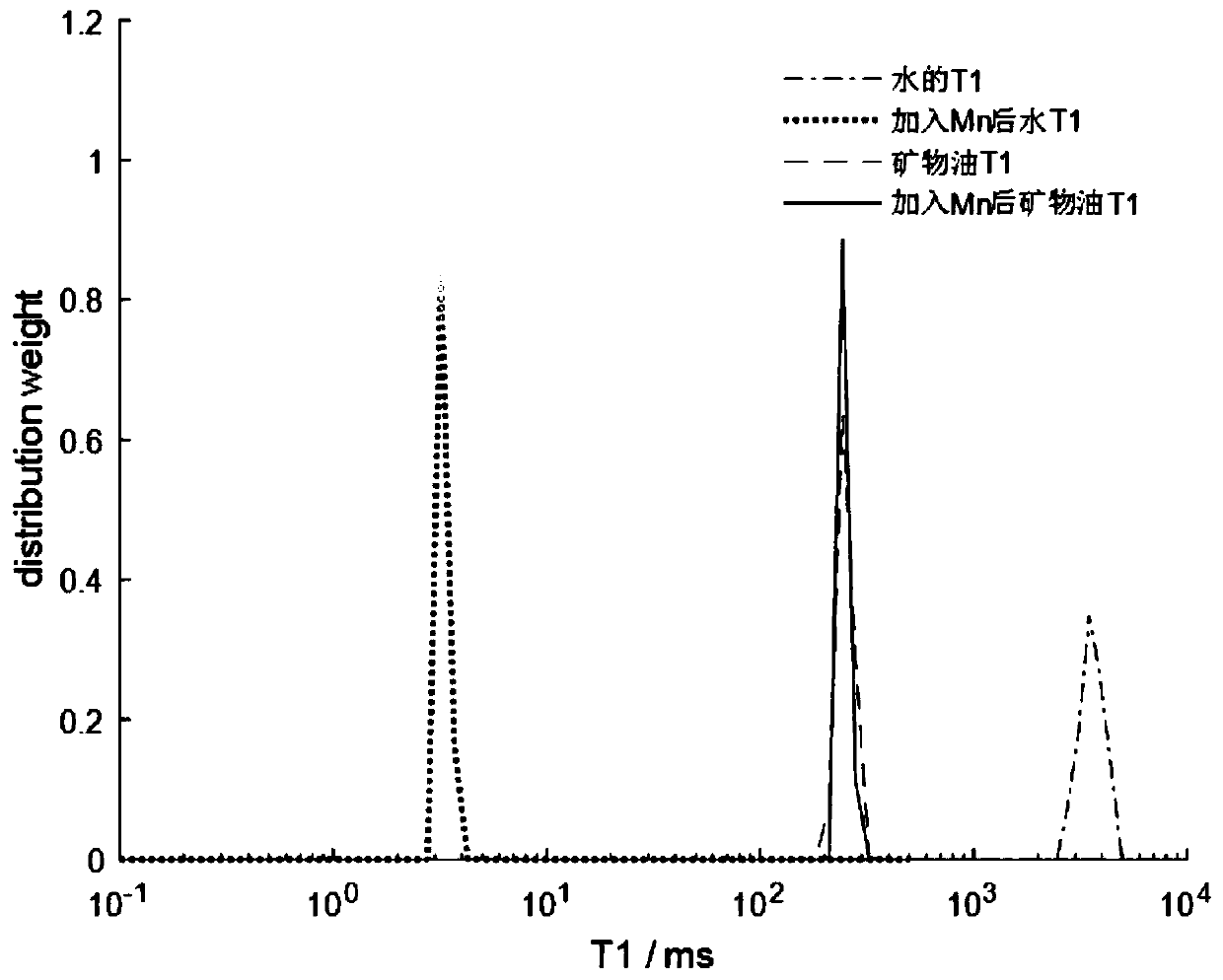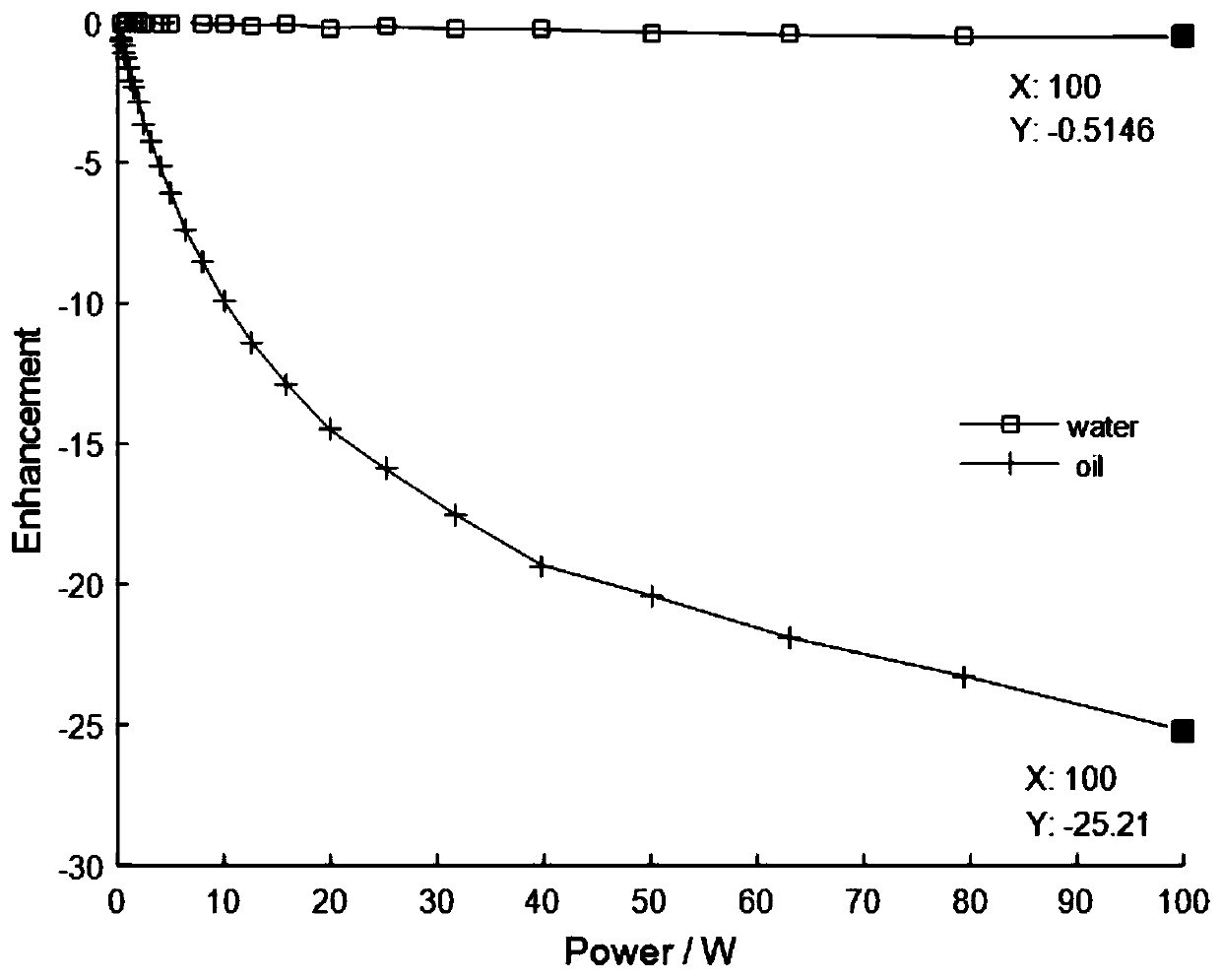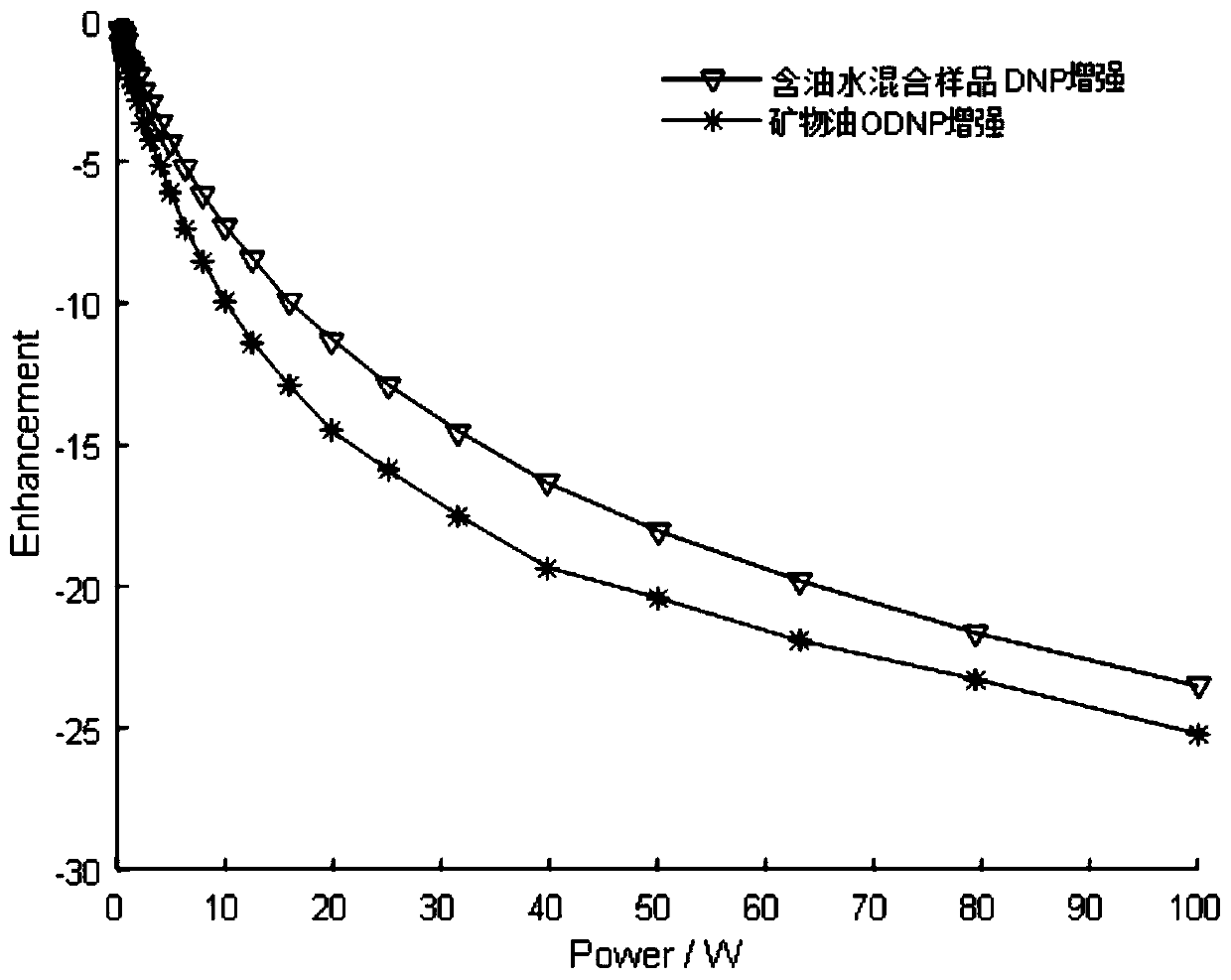Method for separating oil-water two-phase NMR signal by utilizing dynamic nuclear polarization
A technology of dynamic nuclear polarization and signal separation, which is applied in the analysis by nuclear magnetic resonance, the analysis by double resonance, and the measurement by double resonance, which can solve the broadening of relaxation distribution, low signal-to-noise ratio, and uncertainty. and other problems, to achieve the effect of improving the signal-to-noise ratio, shortening the test time, and reducing the leakage factor
- Summary
- Abstract
- Description
- Claims
- Application Information
AI Technical Summary
Problems solved by technology
Method used
Image
Examples
Embodiment 1
[0023] 1. Test the T of the oil-water two-phase in the oil-water sample under the condition of a static magnetic field of 0.06T 1 ;
[0024] 2. Add MnCl to the oil-water sample 2 , oscillating to Mncl 2 Completely dissolve, stand and separate to obtain mixed sample A, MnCl in mixed sample A 2 The concentration is 10mM, and the T 1 , two tests T 1 The result is as figure 1 shown by figure 1 It can be seen that adding MnCl 2 Before and after, the relaxation time of the oil phase remains unchanged, and the relaxation time of the water phase changes from 3.5s to 3.2ms;
[0025] 3. Add TEMPO to the mixed sample A, mix well to get the mixed sample B, the concentration of TEMPO in the mixed sample B is 10mM, use DNP single pulse sequence to test the DNP enhancement effect of the oil-water two phases in the mixed sample B, the results are as follows figure 2 shown by figure 2 It can be seen that the DNP enhancement of the water phase is -0.5 at the maximum, that is, the sig...
Embodiment 2
[0027] 1. Add MnCl to the oil-water sample 2 and TEMPO, oscillating to Mncl 2 Dissolve completely, let it stand for stratification, and obtain a mixed sample, and the MnCl in the mixed sample 2 The concentrations of DNP and TEMPO are both 10mM. The DNP enhancement effect of the mixed sample is tested by DNP single pulse sequence, and the DNP enhancement effect of mineral oil is tested by DNP single pulse sequence as a control. The results are as follows image 3 shown by image 3 It can be seen that the DNP enhancement of the mixed sample is close to that of mineral oil, indicating that the water phase signal is suppressed, and the enhanced signal of the mixed sample is basically the oil phase NMR signal.
[0028] 2. Use the CPMG sequence to test the T of the oil-water two-phase in the mixed sample when the microwave power is 10W 2 distribution, and to test the T of the oil-water two-phase in the mixed sample without DNP enhancement 2 As a comparison, the results Figure ...
Embodiment 3
[0030] 1. Add MnCl to the oil-water sample 2 and TEMPO, oscillating to Mncl 2 Dissolve completely, let it stand for stratification, and obtain a mixed sample, and the MnCl in the mixed sample 2 and TEMPO concentrations are 10mM;
[0031] 2. Take two pieces of sandstone with a permeability of 100md and a porosity of 10.9%, and immerse the two pieces of sandstone in the oil phase and water phase of the mixed sample respectively for more than 12 hours. After the immersion, wipe off the excess sandstone surface. The liquid was weighed, the sandstone immersed in the water phase increased from 1062mg to 1118mg, the water content was 54mg, the sandstone immersed in the oil phase increased from 715mg to 747mg, and the oil content was 32mg;
[0032] 3. Use DNP single pulse sequence to measure the DNP enhancement effect of oil-bearing sandstone and water-bearing sandstone at the same time, and use DNP single pulse sequence to test the DNP enhancement effect of oil-bearing sandstone as...
PUM
 Login to View More
Login to View More Abstract
Description
Claims
Application Information
 Login to View More
Login to View More - R&D
- Intellectual Property
- Life Sciences
- Materials
- Tech Scout
- Unparalleled Data Quality
- Higher Quality Content
- 60% Fewer Hallucinations
Browse by: Latest US Patents, China's latest patents, Technical Efficacy Thesaurus, Application Domain, Technology Topic, Popular Technical Reports.
© 2025 PatSnap. All rights reserved.Legal|Privacy policy|Modern Slavery Act Transparency Statement|Sitemap|About US| Contact US: help@patsnap.com



